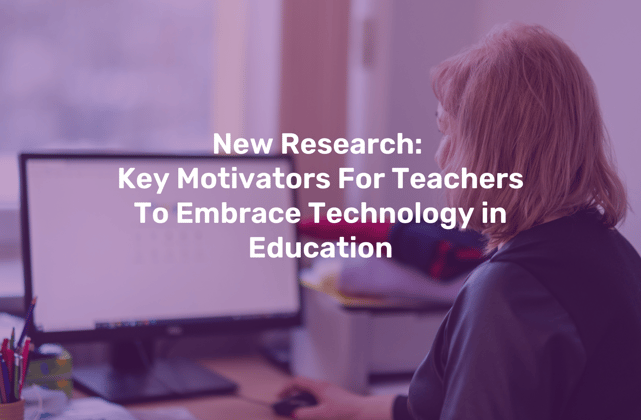Research: Uncovering Motivational Factors for Teachers To Embrace Technology in Education
In a rapidly evolving educational landscape, integrating technology has become essential for fostering innovation and improving learning outcomes. However, a critical challenge lies in motivating teachers to embrace technology-enabled educational innovation. A recent research study involving teachers, participating in Teachers Lead Tech as well, sheds light on the key factors that influence teacher motivation in this context.
6/21/20232 min read


The research study, conducted by a group of Vilnius University researchers and involving Teachers Lead Tech users as well, aimed to investigate the underlying factors that contribute to teachers' motivation in adopting and transferring technology-enabled educational innovations.
The study identified five domains that significantly influence teachers' motivation to transfer technology-enabled educational innovations:
1. Perceived usefulness: Teachers were more likely to adopt technology if they believed it would enhance student engagement, facilitate personalized learning, or improve academic performance.
2. Teacher self-efficacy: Teachers with higher levels of confidence in their ability to effectively use technology demonstrated greater motivation to incorporate it into their instructional practices. Professional development programs and training that enhance teachers' technological competence can boost their motivation.
3. Social support and collaboration: A supportive school environment, collaborative culture, and access to a network of peers who actively use technology were crucial in motivating teachers. Positive interactions and shared experiences facilitated the adoption and transfer of technology-enabled educational innovations.
4. Access to resources: The availability of appropriate technological resources, such as devices, software, and digital content, significantly influenced teachers' motivation. Insufficient resources or inadequate infrastructure posed barriers to technology adoption.
5. Recognition from school administrators: acknowledgment of teachers' efforts and opportunities for professional growth related to technology integration contributed to higher motivation levels. Incentives and rewards recognized the value of teachers' commitment to embracing technology.
Teachers who were confident technology users showed high motivation to transfer learned skills. They were driven by the personal intention to improve job performance, introduce innovations in the educational process, and make the curriculum more engaging. These teachers embraced experimentation, learning from mistakes, and took initiative in their schools.
Reserved technology users, on the other hand, relied more on external motivation factors. They participated in training out of necessity or to keep up with their peers. These teachers often felt hesitant, doubted their abilities, and sought improvement in their knowledge before teaching children. They emphasized the need for structured guidance and support from school administration and peers.
Contrasting Motivations: Confident Technology Users vs. Reserved Technology Users
The study highlighted the crucial role of school administration in supporting innovation adoption. A receptive working environment, peer-to-peer learning, and a defined vision for the school were essential for encouraging teachers to improve their knowledge and transfer innovation effectively. Organizational factors, such as flexibility, support for change, and a positive organizational climate, played a significant role in facilitating innovation adoption throughout the school.
To delve deeper into the study and its findings, you can access the full research paper here.
